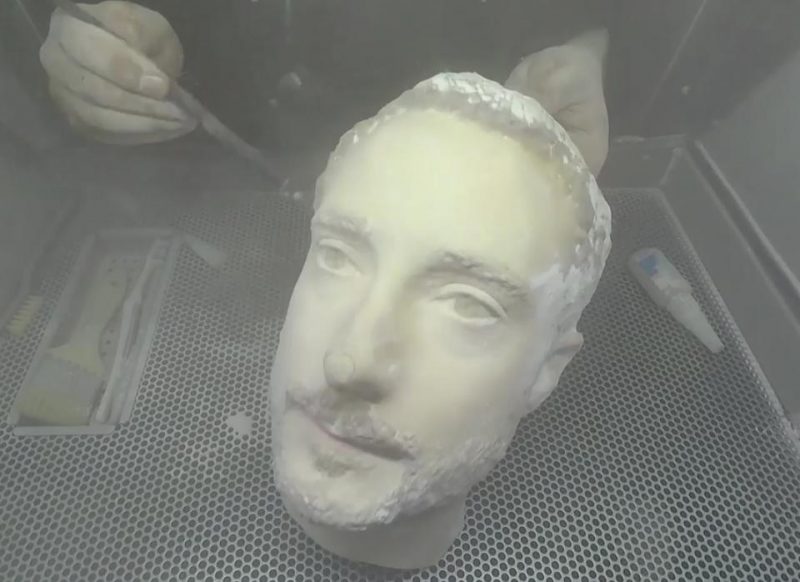Recent 3D printing technology allows us to do a lot of things – nowadays you can even print a full-size replica of a human head, which you can use for fun or for more nefarious means.
Which is exactly what a Forbes reporter did: he commissioned a 3D printed model of his own face so he can put the face unlock system of a number of recent phones up to the test. The smartphones in question were the iPhone X for starters and the LG G7 ThinQ, a Samsung S9, a Samsung Note 8 and a OnePlus 6.
The reporter placed the fake head in front of the devices and all four Android devices unlocked, with various degrees of difficulty and the only one that was not fooled was, according to the report, the iPhone X.
It is noted that the G7 does warn the user not to use facial recognition: “face recognition is a secondary unlock method that results in your phone being less secure” – that is the first message the user receives when they open the phone for the first time.
During the testing through, the G7 updated its facial recognition software, which made the entire process not impossible, but definitely more troublesome.
An LG spokesperson told Forbes that facial recognition has to be seen as a “secondary unlock feature” much in the same way the PIN is and that LG is constantly improving its facial recognition software “through updates for device stability and security.”
The Samsung S9 delivers a similar message when turned on: “Your phone could be unlocked by someone or something that looks like you,” it begins “If you use facial recognition only, this will be less secure than using a pattern, PIN or password“. With that in mind, the software was tricked after different angles and lighting were used on the 3D printed head.
The Note 8 was also tricked, though it did require a bit more work from the team, while the OnePlus 6 presented a similar experience.
The one smartphone that stood up to the test was the iPhone X – we do know that Apple worked with a studio in Hollywood and created realistic masks that they tasted their Face ID software with. It looks like it was worth the effort though, as the reporter was unable to access the phone with the 3D printed head no matter how hard he tried.
With all this information in mind, it still does not matter if you use any of the other phones or the iPhone X – Matt Lewis, research director at cybersecurity contractor NCC Group still stands by the fact that the PIN and the password are the best option if you are serious about guarding your data.
“Focus on the secret aspect, which is the PIN and the password,” Lewis stated “The reality with any biometrics is that they can be copied. Anyone with enough time, resource and objective will invest to try and spoof these biometrics.“
Follow TechTheLead on Google News to get the news first.























